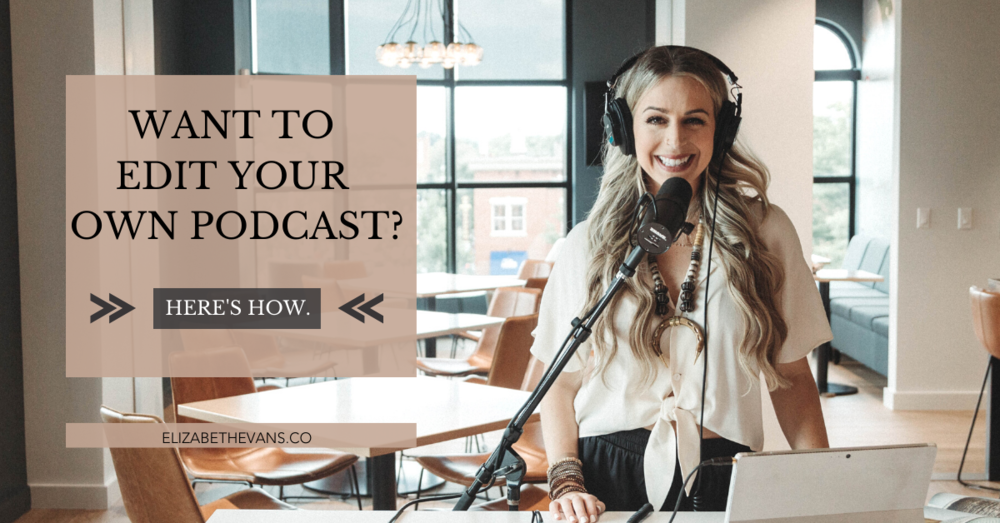
“HOW DO I EDIT A PODCAST?”
I get it – you’re not an audio engineer. How would you even know where to begin?!
Have no fear, there are options available to you for podcast editing.
And I’m going to let you in on some secrets, whether you contract this service out, or if you want to keep it in house.
First things first, no amount of editing will make poor quality audio sound good. Investing in semi-decent recording equipment is a worthwhile investment if you are going to be podcasting for the long haul. And it’s probably even less than you think. Check out my Freebie on Equipment here.
OPTION 1a
If you’re a delegator at heart and you’re not feeling the idea of learning the new skill of audio editing – outsourcing is your option FOR SURE. And as well all know and love – Fiverr is going to be a great option for that.
AND I would look locally #shoplocal. With new podcasts popping up every day, I’m certain there is someone that might be just down the street!
Hiring out will typically run you anywhere from $40-325/episode, depending on the level of the engineer and the length of your episodes.
Option 1b
Some engineers will work a deal with you. If you plan to run ads on your show, the engineer could work up a contract similar to your show being part of a Podcast Network. What does this mean? You as the host wouldn’t be paying the engineer on a per-episode basis, but you would split the advertising revenue on the back end.
This has to make sense for both parties, and involves a bit more detail, but is an option if you need to make it work!
Option 2
Now let’s say that you don’t want to hire someone else to balance and edit your audio.
One – I applaud you. I believe in YOU.
As a note – if you have someone editing your audio, you can get away with a little lower-end equipment because their experience allows them to improve your audio!
But if you are going to do the editing yourself, I’d say it’s worth it to invest a bit upfront so your audio quality is amazing from the start – and you don’t have to learn about mixing audio and all the fun things that come along with that.
Here is an example of audio on my SM7b mic – without any treatment from software.
Quality sounds pretty decent, right? Initial investment = long term benefit.
Thirdly, as far as editing platforms go, there is one (in my opinion) that is by far the EASIEST option.
It’s a platform called Descript (no this is not an ad, I’m just a fan of the product).
Here’s the low down on it.
Descript automatically transcribes your audio for you. Which doesn’t sound all that amazing in and of itself, but what makes it SO COOL is that you can edit the audio from editing the transcription.
Yep. It’s essentially like editing a Word Document, except when you delete something from that ‘word document’, it also deletes the associated audio with it.
Easy peasy right?
And what’s better – you can add music, intros and everything else your podcast may need.
There is a built-in tutorial to get you started – which is a perfect touch added by the creators if I do say so myself.
This route does involve a bit of a time investment to learn the platform, but it’s extremely intuitive. Especially compared to a platform like Logic or Audacity.
Option 3:
And, as with anything in life, there is always an Option C.
Let’s say you want to edit your own audio, but can’t quite get your levels right. If you record in a platform like Logic or Ableton and you typically record in the same location with the same mic each time, I can create an ‘audio template’ to balance your volume levels that you can use each and every time you record.
It’s like a template you would pull up in Word or PowerPoint – just for your audio.
It’s a one-time investment that you get to use as many times as you’d like.
So there you have it, friends.
Three different options on how to edit your podcast audio.
Let me know your thoughts below on how YOU edit your audio.
COPYRIGHT ELIZABETH EVANS MEDIA, LLC 2021